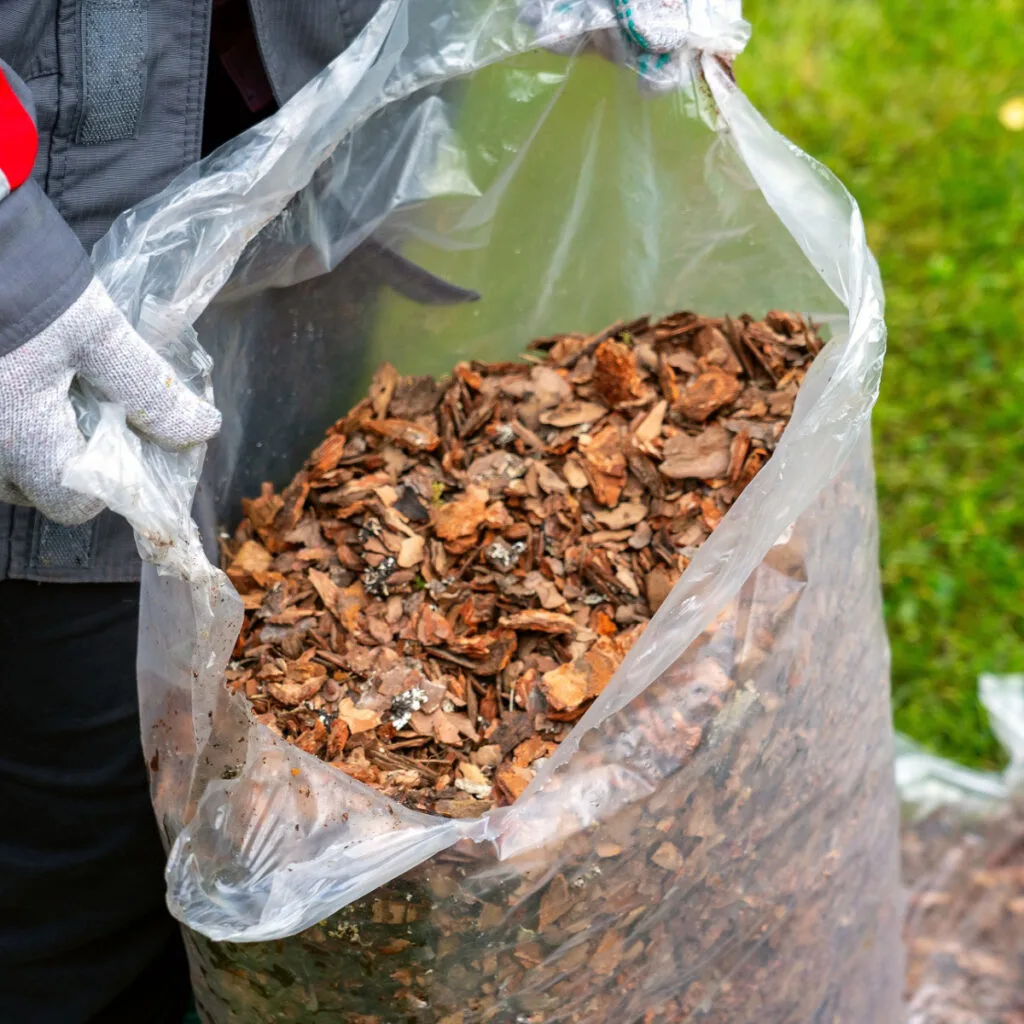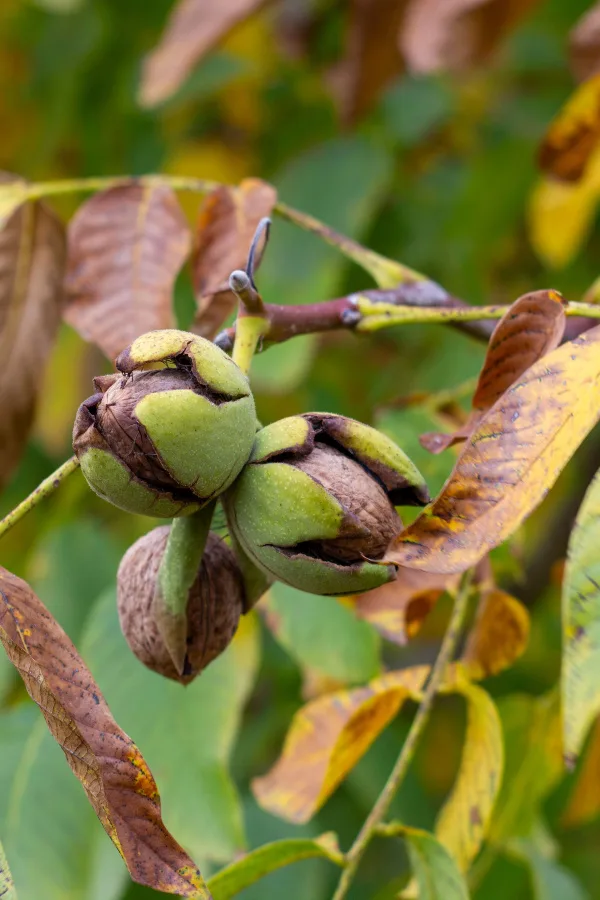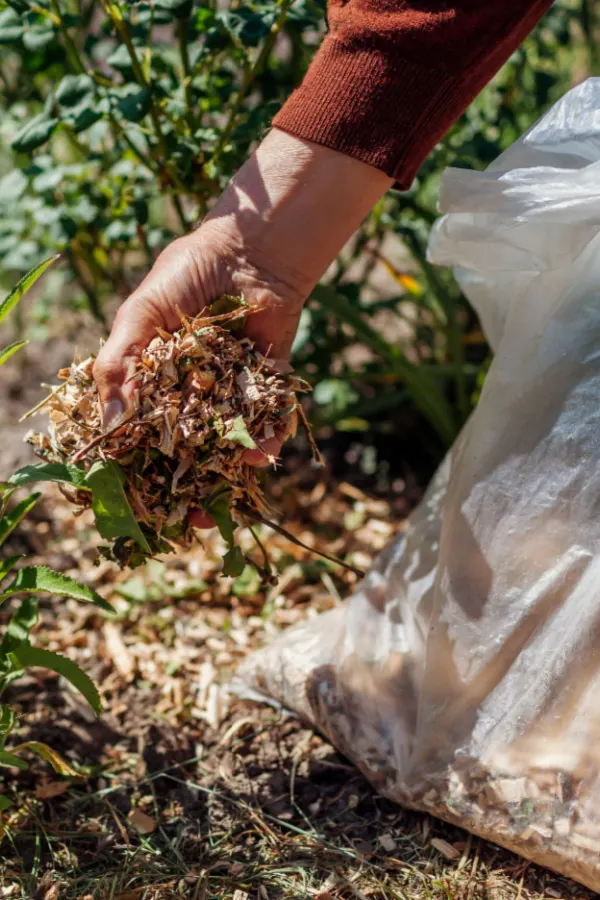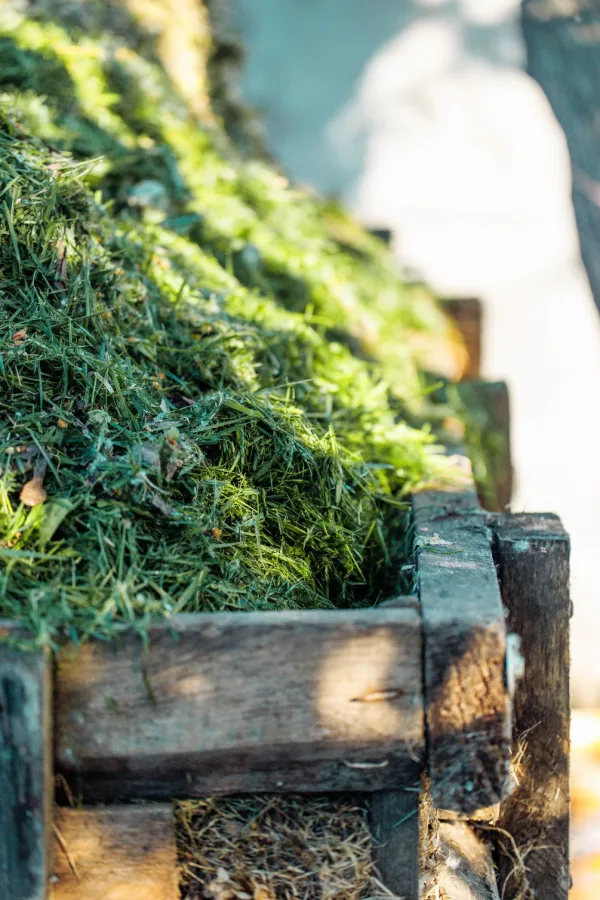Looking for the best way to use all of those falling leaves this fall in your gardens, flowerbeds and compost piles?
Autumn is here and that means “you know whats” are falling everywhere. For many, all of those leaves signal a lot of work – as in raking, blowing and bagging. But for gardeners, the overabundance of this great organic material can help to protect plants, power soil, and make a great ingredient for making some incredible compost!
Leaves are one of the best organic materials around – especially when you consider they are free for the taking. Not only do they provide nutrients back to the soil as they break down, they also add incredible humus and structure.

But when it comes to using leaves successfully in the landscape, it all boils down to knowing which ones you can use – and where and how to best use them. And luckily, that is exactly what today’s article is all about!
The Best Way To Use Leaves In The Fall
Good Versus Bad
The first key to success is knowing which leaves are good for plants, soil and compost piles – and which should be left out.
Sadly, not all have the same value. Some leaves can be harmful to plants when used anywhere near them. And they can also make soil or compost where they are used toxic as well. In addition, their are some leaf varieties that simply take too long to break down. For that very reason, those varieties need to be used differently.

When it comes to leaf types that are great to use anywhere in the landscape, at the top of the list are ones from maple, cherry, birch, poplar, ash, willow, black cherry and all fruit trees. A leaf from these trees is not only superior when it comes to nutrient values, it will also break down fast.
What about oak trees? These are good to use for gardens, flowerbeds and compost piles, but need to be used in moderation. That is because they are slightly acidic. If too many are used, they can start to change the pH. A good rule of thumb is to keep their use to 20% or less of all leaves.
There are a few leaves you want to avoid using entirely. These include black walnut, beech, buckeye, eucalyptus and magnolia trees. All of these contain toxins that can actually harm or even kill vegetable plants, annuals, and perennial flowers.
Now that you know what leaves to collect and use, let’s take a look at how to best use the all throughout the landscape – starting with in the vegetable garden
Leaf Power In The Garden
Autumn’s falling leaves are terrific for using in the garden – and in several ways. First and foremost, adding a few inches of shredded leaves to the top of your garden soil is a great way to build back nutrients and structure.

Vegetable plants take a lot of nutrients from the soil. And if not replaced, the following year’s garden can suffer. But by simply adding a few inches of shredded leaves on top, you can help re-energize your soil. Shredding the leaves first is important. If left whole, they won’t break down fast enough for next year’s garden to help.
Once added, you can either allow the leaves to slowly break down over the winter, or if you happen to till, you can incorporate them into the top layer of soil.
You can also use whole leaves on top of the soil to help protect bare soil over the winter months. If you don’t plant a cover crop, this is a perfect way to keep weeds out. At the same time, it also does wonders for preventing soil erosion.
Simply layer on a few inches of whole leaves and wet them down. They will stay in place all winter long to protect. And in the spring – simply mow them over with your lawn mower and allow them to stay in place. They will decay over the summer and provide even more nutrients for your plants as they do.
Leaf Power In Flowerbeds
Shredded and whole leaves are also perfect for using in flowerbeds. A few inches piled around perennial plants is the perfect way to protect them through the cold winter months. Not only that, as they break down over winter and next spring, they release their nutrients into the soil and the plant’s roots.

When protecting plants in flowerbeds, you can use a combination of shredded and whole leaves. First, apply shredded ones around the base of plants. Then cover with whole leaves to help hold in place and protect through the winter.
In the spring, lift them the whole and shred them up and add to your compost pile. It’s the perfect no-cost way to protect and power your perennials!
Leaf Power In Your Compost Pile
Last but not least, once you are done using autumn’s bounty in your garden and flowerbeds, it’s time to make some great compost! See: How To Compost Leaves Fast – 4 Secrets Make Great Compost This Fall!
Shredded leaves are absolutely incredible for being the main ingredient in a fall compost pile. Not only are they plentiful, but they break down fast. Especially when you add in old potting soil, coffee grounds, green grass clippings and other fast-decaying materials along with them.

A good compost pile made from leaves can break down fast enough to be ready to use for spring planting. And because there always seems to be plenty of them – you can make more than enough compost!
You can also use leaves to make leaf mold, which happens to be wonderful for powering plants in the vegetable garden or flowerbeds. And if you think making it sounds difficult, check out our article that can walk you through the steps with ease : How To Make Leaf Mold.
Here is to taking advantage of all of those falling papery trinkets this autumn – and to growing better than ever next year!
